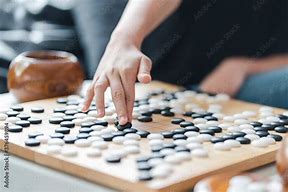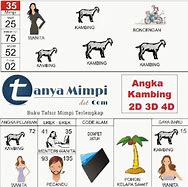
Korean Baduk Table
From Wikipedia, the free encyclopedia
The Korean Baduk League is a Go competition in South Korea. The league is made up of eight teams sponsored by several different companies. The tournament itself is sponsored by Baduk TV.[1]
Past winners and runners-up
/!--#include file="./dbcool.asp" -->
Wir verwenden Cookies und Daten, um
Wenn Sie „Alle akzeptieren“ auswählen, verwenden wir Cookies und Daten auch, um
Wenn Sie „Alle ablehnen“ auswählen, verwenden wir Cookies nicht für diese zusätzlichen Zwecke.
Nicht personalisierte Inhalte und Werbung werden u. a. von Inhalten, die Sie sich gerade ansehen, und Ihrem Standort beeinflusst (welche Werbung Sie sehen, basiert auf Ihrem ungefähren Standort). Personalisierte Inhalte und Werbung können auch Videoempfehlungen, eine individuelle YouTube-Startseite und individuelle Werbung enthalten, die auf früheren Aktivitäten wie auf YouTube angesehenen Videos und Suchanfragen auf YouTube beruhen. Sofern relevant, verwenden wir Cookies und Daten außerdem, um Inhalte und Werbung altersgerecht zu gestalten.
Wählen Sie „Weitere Optionen“ aus, um sich zusätzliche Informationen anzusehen, einschließlich Details zum Verwalten Ihrer Datenschutzeinstellungen. Sie können auch jederzeit g.co/privacytools besuchen.
Although the normal size of a Baduk board is 19 by 19 lines, it is possible to use smaller sizes. Beginners can learn the basics on a 9 by 9 board, and a quick game can be played on a 13 by 13 board without losing the essential character of the game. The following examples all use a 9 by 9 board.
A game of Baduk starts with an empty board. Each player has an effectively unlimited supply of stones, one taking the black stones, the other taking white. The basic object of the game is to use one's stones to form territories by surrounding vacant areas of the board. It is also possible to capture the opponent's stones by completely surrounding them.
The players take turns, placing one of their stones on a vacant point at each turn. Black plays first. Note that the stones are placed on the intersections of the lines rather than in the squares. Once played, stones are not moved. However they may be captured, in which case they are removed from the board, and kept by the capturing player as prisoners.
At the end of the game the players count one point for each vacant point inside their own territory, and one point for every stone they have captured. The player with the larger total of territory plus prisoners is the winner.
shows the position at the end of a game on a 9 by 9 board, during which Black captured one white stone which had been at
Black has surrounded 15 points of territory, 10 in the lower right corner and 5 towards the top of the board. Black's territory includes the point a formerly occupied by the stone he has captured. Adding his prisoner, Black has a total of 16 points.
White's territory is 17 points, so White wins the game by one point.
The points which are horizontally and vertically adjacent to a stone, or a group of stones, are known as liberties. An isolated stone or group of stones is captured when all of its liberties are occupied by enemy stones.
shows three isolated white stones with their liberties marked by crosses. Stones which are on the edge of the board have fewer liberties than those in the centre of the board. A single stone on the side has three liberties, and a stone in the corner has only two liberties.
shows the same three stones of
each with only one liberty left and therefore subject to capture on Black's next move. Each of these white stones is said to be in dansu/atari, meaning they are about to be captured.
shows the position which would arise if Black went on to play at
. Black has taken the captured stone from the board, and in a real game would keep it as a prisoner. The same remarks would apply to the other two white stones, should Black play at
Stones occupying adjacent points constitute a solidly connected group. Two examples of such solidly connected groups of stones are shown in Diagram 5.
It is important to remember that only stones which are horizontally or vertically adjacent are solidly connected; diagonals don't count as connections. Thus, for example, the two marked black stones in the top left of Diagram 5 are not solidly connected.
As far as capturing is concerned, a solidly connected group of stones is treated as a single unit. As with isolated stones, a group is captured when all of its liberties are occupied by enemy stones.
A player may not 'commit suicide', that is play a stone into a position where it would have no liberties or form part of a group which would thereby have no liberties, unless, as a result, one or more of the stones surrounding it is captured.
have both been reduced to just one liberty. Note that the Black group in the top right is not yet captured because of the internal liberty at
. The two stones at the top left of
can each be captured independently at
we see the position which would result if Black captured at
and White captured at f and at
. The remaining black stone could be captured at
. As with the capture of a single stone, the points formerly occupied by the black group have become White's territory, and vice versa.
illustrate the rule governing capture. In
, White may not play at
, since either of these plays would amount to suicide; the stones would then have no liberties. However, if the outside liberties have been filled, as shown in
become legal; they fill the last black liberty in each case, and result in the black stones being captured and removed from the board as White's prisoners.
, White was able to play at i and j because these plays result in the capture of the adjacent black stones. Since White's plays make captures, they don't count as suicide.
A different situation is shown in
. The black group here could only be captured if White were able to play at both
. Since the first of these plays would be suicide, there is no way that White can carry out the capture. These two separate spaces within the group are known as eyes.
Any group of stones which has two or more eyes is permanently safe from capture and is referred to as a live group. Conversely, a group of stones which is unable to make two eyes, and is cut off and surrounded by live enemy groups, is called a dead group since it is unable to avoid eventual capture.
, the black group at the bottom is in danger of being captured. To ensure that his group has two eyes, Black needs to play at
, the black group will no longer be able to make two eyes, and cannot avoid eventual capture; White can always fill in the outside liberties and then play at
would only hasten the group's death.
The black group at the top left of
is already alive even though there is a white stone inside one of its eyes. Since White can never capture the black stones, the white stone caught inside the group can't be saved.
In the course of a real game, players are not obliged to complete the capture of an isolated dead group once it is clear to both players that the group is dead. In this case, once White has played at
, the situation may be left as it is until the end of the game. Then, the dead stones are simply removed from the board and counted together with the capturing player's other prisoners.
, Black can capture a stone by playing at r. This results in the situation at the top of Diagram 13. However, this stone is itself vulnerable to capture by a White play at
. If White were allowed to recapture immediately at u, the position would revert to that in
, and there would be nothing to prevent this capture and recapture continuing indefinitely. This pattern of stones is called pae/ko - a term meaning eternity. Two other possible shapes for a pae/ko, on the edge of the board and in the corner, are also shown in this diagram.
The pae/ko rule removes this possibility of indefinite repetition by forbidding the recapture of the pae/ko, in this case a play at
, until White has played at least one move elsewhere. Black may then fill the pae/ko, but if he chooses not to do so, instead answering White's intervening move elsewhere, White is then permitted to retake the pae/ko. Similar remarks apply to the other two positions in these diagrams; the corresponding moves at w and
must also be delayed by one turn.
Usually a group which can't make two eyes will die unless one of the surrounding enemy groups also lacks two eyes. This often leads to a race to capture, but can also result in a stand-off situation, known as big/seki, in which neither group has two eyes, but neither can capture the other due to a shortage of liberties. Two examples of big/seki are shown in
. Neither player can afford to play at
, since to do so would enable the other to make a capture.
Note that even though the groups involved in a big/seki may have an eye, as a general rule none of the points inside a big/seki count as territory for either player.
The game ends by agreement. When neither player believes that he can make more territory, capture more stones, or reduce his opponent's territory by playing on, he will pass instead of making a move on the board. Two consecutive passes end the game.
As remarked in the introduction, one of the best features of the game of Baduk is its handicap system. A weaker player may be given an advantage of anything up to nine stones. These are placed on the board in lieu of his first move.
Through the grading system, any two players can easily establish the difference in their strength, and therefore how many stones the weaker player should take in order to compensate for this difference. Since a player's grade is measured in terms of stones, the number of stones for the handicap is simply the difference in grade between the two players.
There is an established pattern for the placement of handicap stones, shown by the dots which are marked on any Baduk board. This is shown in
, seen from the Black player's point of view. For handicaps of two or three stones, where the stones can't be placed symmetrically, the convention is that the far left corner is left vacant.
The rules described in this page are the international rules. These are the rules most commonly used in the West. The Chinese use a different system of rules which are essentially the same but which involve a different method of counting the score. The two sets of rules usually lead to the same game result.
Proudly made with ♥ in Poland
From Wikipedia, the free encyclopedia
South Korean go (baduk) organization
The Korea Baduk Association, also known as Hanguk Kiwon (Korean: 한국기원), was founded in November 1945 by Cho Namchul.
Baduk is a game which was present in Korea by the 5th century.[1] It originated in China, but the West is more familiar with the Japanese name Go. This is because the Japanese were the first to introduce it to the West. Japan was introduced to the game in the 7th century AD.
Initially, most Korean players followed the sunjang style of beginning by placing sixteen stones —eight white and eight black— on the board in a preset pattern. Cho Namchul knew that the international players began with an empty board like Japan since Japan was the first to introduce the game to the West. By forming the association, he set about convincing Koreans players to use the "modern" style.
The Hanguk Kiwon is the Go organization that oversees Go professionals in South Korea. It issues official diplomas for strong players and organizes tournaments for professionals.



